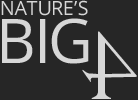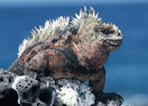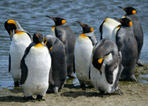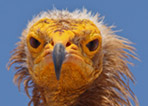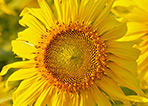
Locations
‘Paradise lost’? Some impressions on Galapagos, Fair Isle, the Falkland Islands, and Socotra.
It seemed a natural process to me to group these 4 unique and geographically unrelated islands together. I could not help but do so as Socotra and Galapagos seem to have so many aspects in common, including east and west, iconic species, mostly desert, UNESCO World Heritage status, habitat destruction issues. The Falklands and Fair Isle too seemed somehow to be connected by so many similar connections, British, isolated, sheep based economy, mentality, weather, north and south, and similar bird species, like the Artic tern and endemic wren. As Darwin visited the Falklands and Galapagos, there was some connection there too, so I simply connected the dots.
However revealing the island photographs are, they sadly do not illustrate the ongoing ‘trouble in paradise’, with respect to their sustainability. These 4 apparently pristine environments are constantly in flux. It could be argued that the scales appear to be weighed somewhat against their long term sustainable survival, ironically, which must be aided by even more human intervention, (subsidies, laws, species eradication), in its varying sustainable conservation forms. Some impressions follow.
All Islands
It is worth recalling that small islands are often volatile habitats and science has recorded that 86% of all reptile extinctions have occurred on islands. Guam, Easter Island and New Zealand are examples thereof. The extinction of the flightless bird, the Dodo, on the island of Mauritius in the Indian Ocean in 1662 was but one obvious example of hundreds of island species lost forever. There are currently 18 Critically Endangered African breeding birds on 10 islands around Africa. In Sao Tome, 3 bird species on those islands are of 50 or less in number.
However, nature is relentless with respect to island survival if humans and all their introductions and climate changes stay well clear. Consider the case of Surtsey Island some 20km off Westmannaeyjar, where I have birded, south of Iceland. Surtsey erupted between 1963 and 1967. By the summer of 1964 several species of flies and butterflies were found there. By the summer of 1965 vascular plants and seals arrived. By 1970 black guillemots and fulmars bred for the first time. 5 species of gull bred by 1986 and 91 bird species have now been recorded on Surtsey. The island has indeed become a later day Galapagos and living laboratory of the Atlantic Ocean.
Conversely, ignorant human intervention on islands has been catastrophic. Easter Island in the Pacific is a prime example of ignorant human unsustainability. Iconic photo opportunities of stone moai, but lifeless Easter Island did not enchant me. However, besides the catastrophe of human and rodent introduction on almost every island in the world decimating indigenous fauna avifauna and flora there have been other forms of introductions. Non indigenous flora, donkeys, reindeers on South Georgia (pop.3100), to alien predators, goats and pigs on Galapagos, devastating rodents, ‘super mice’ on Gough Island and Tristan da Cunha in the Atlantic wiping out Tristan Albatross numbers.
But the current largest threat to most islands is Global Warming. Whether it is human inspired (remains very contentious), or a cyclical natural phenomenon is not for debate here. But it is a fact. Certain islands such as the Maldives Archipelago and islands in the Pacific Rim like the Tuamotu Archipelago, amongst many others will completely disappear with rising sea levels over time. Even Venice will gradually be submerged. Fish stocks will change. Coral will bleach.
Conversely, recent scientific human intervention has seen the successful eradication of rats (Brodifacoum wrapped in bait pellets dropped from helicopters) from Campbell Island in New Zealand to Rat Island in the Aleutian chain in the North Pacific to South Georgia, ongoing at present. Barren Ascension Island in the middle of the Atlantic has been partially reforested, and global warming sea temperature elevation has ironically caused more precipitation resulting in verdant growth. Successfully saving certain Mauritius bird species from a similar fate as that of the extinct Dodo has been accomplished on that Indian Ocean island.
As a photographer of the natural world and published botanist, visiting these 4 bio diverse islands and recording the natural history was beyond a privilege. A regret is that I wish I could return to these islands with more time and do a better photographic portfolio. Unfortunately it is an imperfect world and inevitably with very limited time constraints, a window of opportunity arises from one’s day job, which then becomes a ‘once in a lifetime’ visit.
Photographic recorded biodiversity should always be balanced against the catastrophic threat of ‘Paradise Lost’.
- Ashton Vice
- London, U.K.
- 25th September 2012
